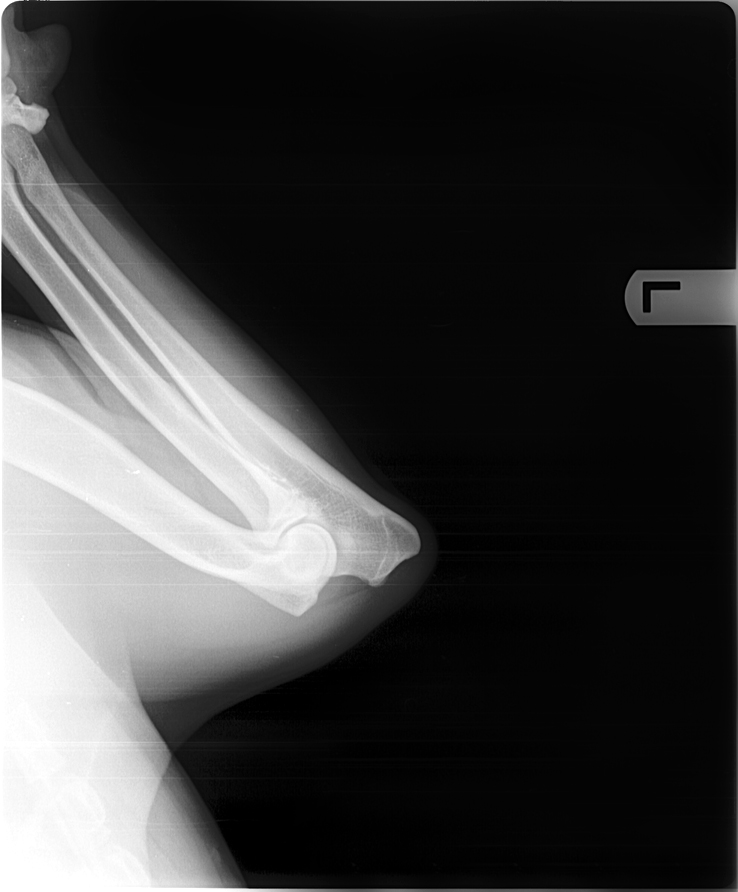Elbow Dysplasia
What is Elbow Dysplasia? Elbow Dysplasia is an orthopedic condition of the bones of the elbow that is diagnosed by orthopedic specialist through evaluation of radiographs.
Is it inherited? Elbow dysplasia is commonly considered to have a genetic basis involving multiple genes.
Can it be prevented? Breeders can reduce the incidence of elbow dysplasia by screening all breeding animals after 24 months of age and factoring those findings into their breeding decisions. Screening requires x-rays of the elbow joint. Those radiographs are sent by your veterinarian to the Orthopedic Foundation for Animals. There, orthopedic specialists evaluate the joint and determine if the joint is “normal.” If the joint is not found to be normal, the OFA will assign one of the following grades: Grade I Elbow Dysplasia, Grade II Elbow Dysplasia, or Grade III Elbow Dysplasia. There is no genetic test for elbow dysplasia, so we rely on what orthopedic specialists can visually see via those x-rays. Breeders then use this evaluation as well as research into the orthopedic history of closely related dogs to reduce the incidence of elbow dysplasia.
The Three Faces of Elbow Dysplasia – The Orthopedic Foundation for Animals
Canine Elbow Dysplasia by the American College of Veterinary Surgeons
Canine Elbow Dysplasia by Sherman O. Canapp Jr., DVM, MS, Diplomate ACVS
Other Links Related to Elbow Health
Jump Down Syndrome – Sherman O. Canapp Jr., DVM, MS, DACVS and Donald Hulse, DVM, DACVS
An injury of the elbow common to working and performance dogs.

